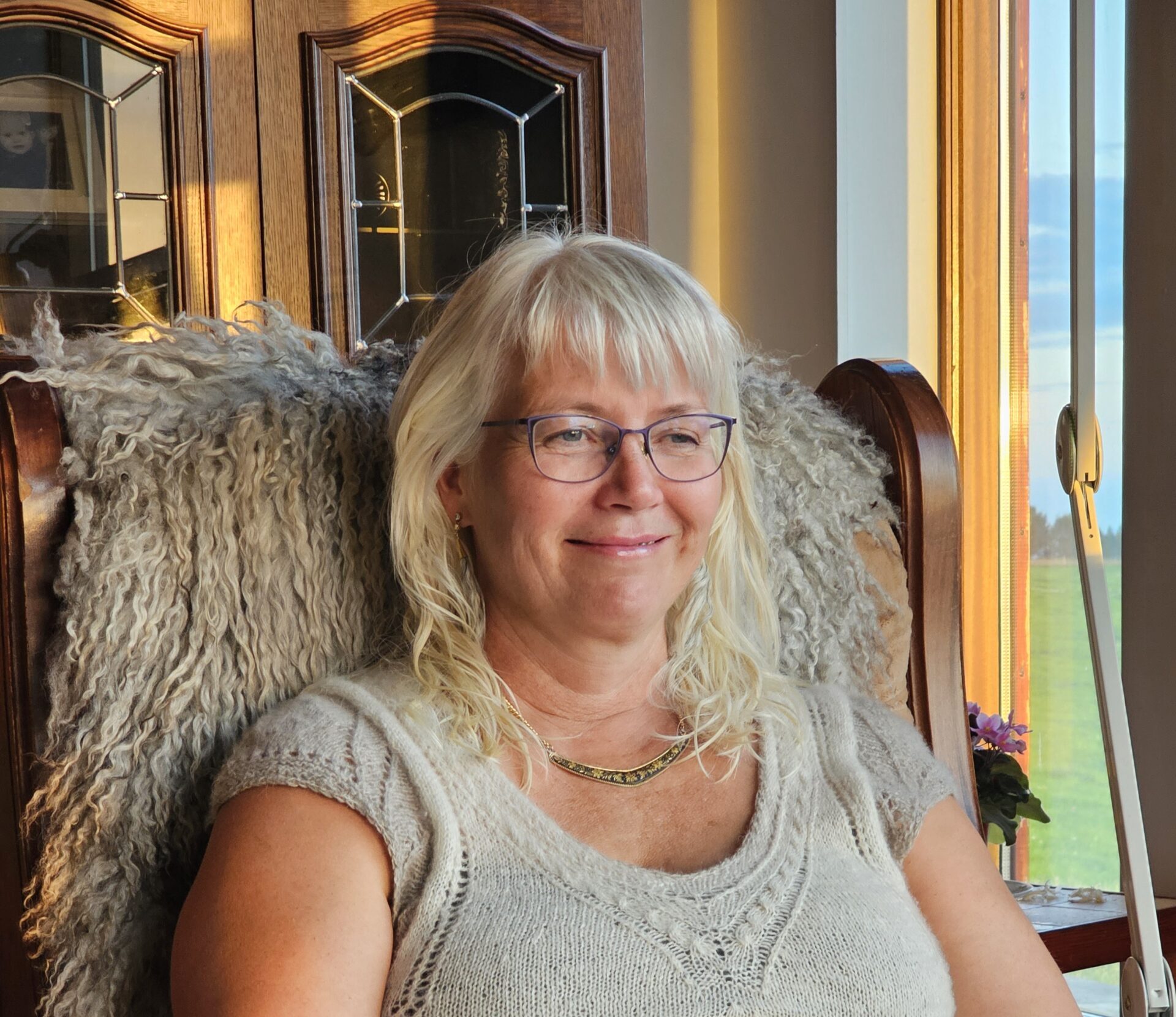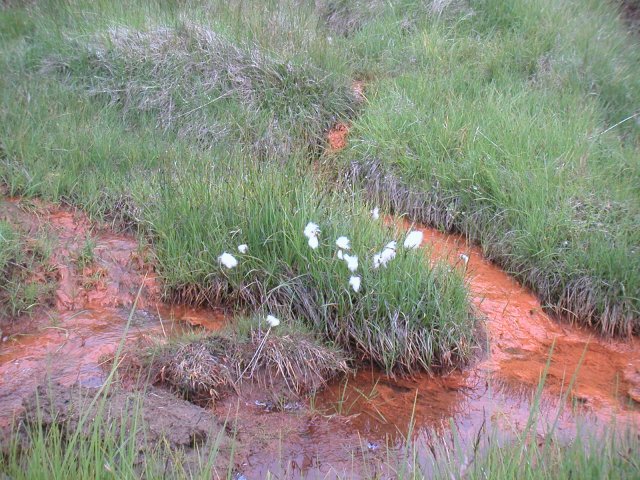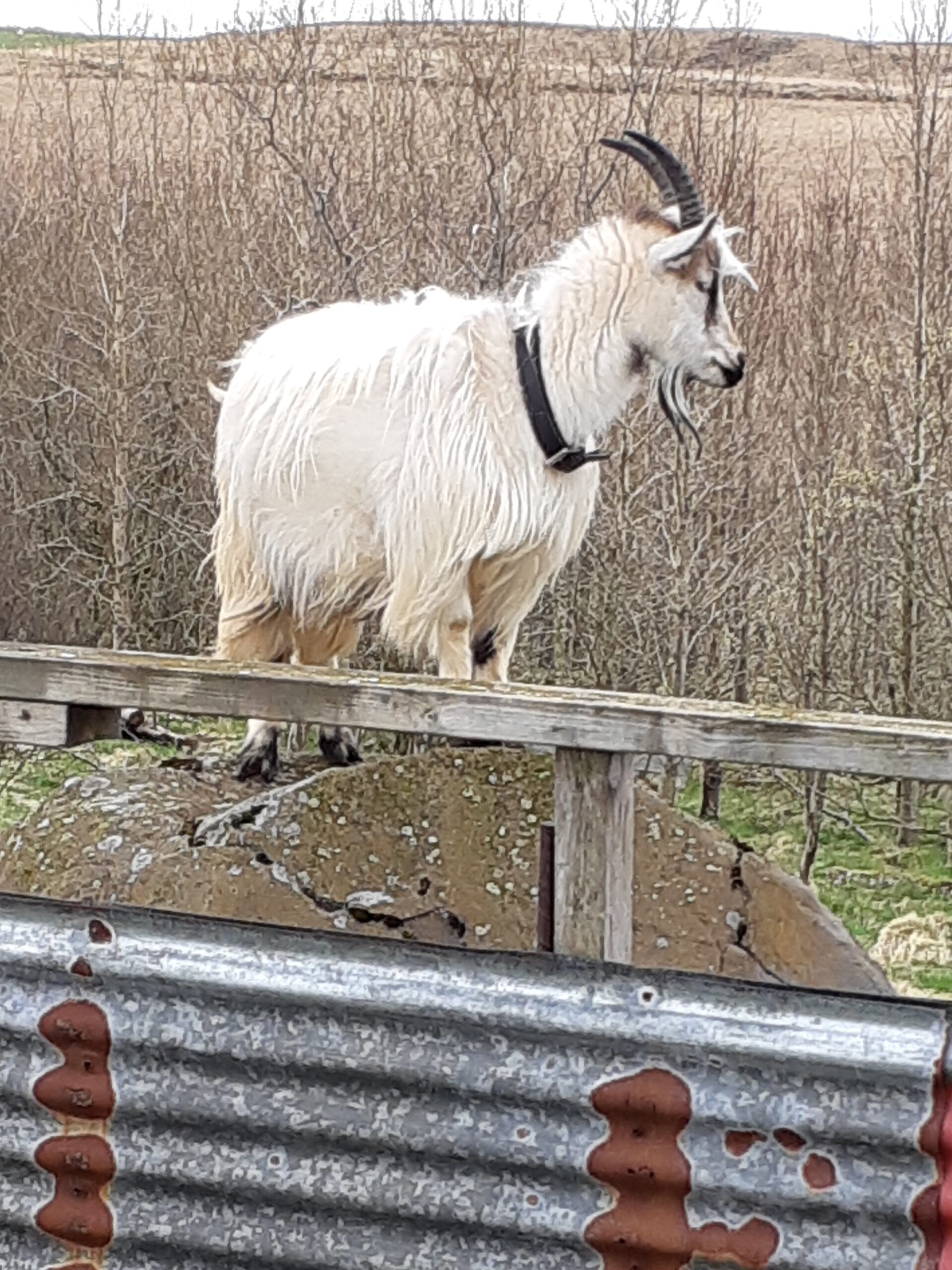
The people that decided to move to Iceland in early ages of settlement, took all the animals with them that they thought would be good to have starting a new life in an unknown country. The only mammal that was here before humans was the arctic fox. The settlers brought horses, sheep, cows, hens, pigs, dogs, cats and goats with them. Later, minks were imported and as things happen some of them escaped from the human and now the mink is also wild in the Icelandic nature.
The goat was to produce milk and the legend of the goat was, that it was the poor man’s cow. So they were looked down on. They were also a bit troublesome, because goats are sometimes very independent and sometimes do what they think is best and not what others want them to do. So when the cow was available and farmers in Iceland could afford to have a cow instead of a goat,- they preferred the cow.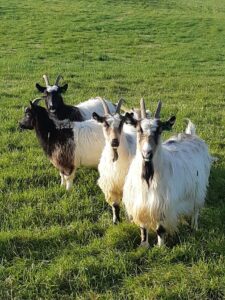
Once the Icelandic goat was nearly extinct and around 1960 there were 62 animals left in the country. I want to mention Jóhanna Bergmann Þorvaldsdóttir specially when I say that she went out on a mission to save the Icelandic goat. – And succeeded. It is written in our law that we are supposed to preserve the diversity of our livestock, and to prevent the possible endangerment of our goat breed. And many people have decided to keep few goats to protect them. There are few that can be counted for as being goat farmers, because there are only about 5 farmers who have 50 goats or more. At the end of the year 2022 there were 119 goat farmers registered in Iceland with 1.620 goats in total,- showing that they are still an endangered species.
Icelandic goats are cashmere goats. They are actually not cashmere by genetic sources, but have adapted to the climate (the constant wind) in Iceland and grown out an inner coat that keeps them warm and insulated in our weather conditions. So the fibre that they give becomes cashmere when processed into yarn. How amazing is that!
To get the fibre from a goat, they need to be combed. It is not shorn (cut off with scissors or shears) like from the sheep. A special comb is used and when the goat is shedding, it feels comfortable for them. Each goat gives very little fibre – about 300 gram maximum. It is time-consuming to card out the fibre when they shed in spring. If it is done to early, it is stuck and the goat is not happy, and if it is done to late, the fibre is felted and can not be processed. So if you want to use the fibre, you have to be ready when the goat is ready.
I have spun goatfibre for goat farmers from the beginning of Uppspuni in 2017. It is also very time consuming to process goatfibre into yarn. I have always kept the material 100% clean. But I did not know much about them personally and I wanted to learn. I also wanted to participate in preserving the rare breed of the Icelandic goat.
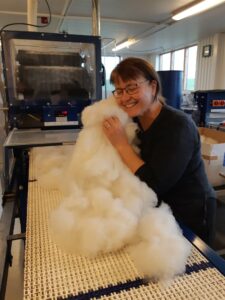
So in 2021 I got 4 female goats and 1 male of my own to my farm. Last spring I did the first carding and it was actually very pleasant to see how they enjoyed being combed. It was a quality time that came out of it, sitting down with them for few minutes for few days in a row and comb them from neck down. Getting this amazing fibre in a bag that I could then process into yarn. And the yarn!!! It is something else. WOW. It can actually not be described, it must be touched. And when I show people what I am doing, it is always the same happy feeling I get when I see the expression on their faces when I show them a piece of goatfibre or cashmere yarn. 🙂

Now that I finally had a little amount of goatfibre of my very own, I decided to make some experiments. I had a fleece of grey wool from a lamb of mine that was unusually soft. And I decided to take it twice through the fibre separator and get more of the tog (the coarser hair) out of the lambs fleece. That way I had more thel (the inner coat). I mixed it with the goatfibre. 10% wool with 90% goat and 20% wool with 80% goat and it is just amazing. It is so soft and nice and can very nicely be processed that way without harming the goatfibre. And the biggest benefit of it was that I could spin it straight after the spinning of a wool. But usually when I spin goatfibre, we have to change some of the machines and it takes more time, and it is actually a lot of trouble to spin it on it’s own. So adding 10 or 20 % of wool and still have this amazing quality in the yarn and getting it spun more easily made me very happy. I did one experiment more with one farmer’s goatfibre with her permission.- I put 30% of the grey lamb’s wool, but then I could feel there was wool in it. So my conclusion is that adding 10 or 20% of good quality lambs wool with the goatfibre makes it easier to spin and the quality is still there.
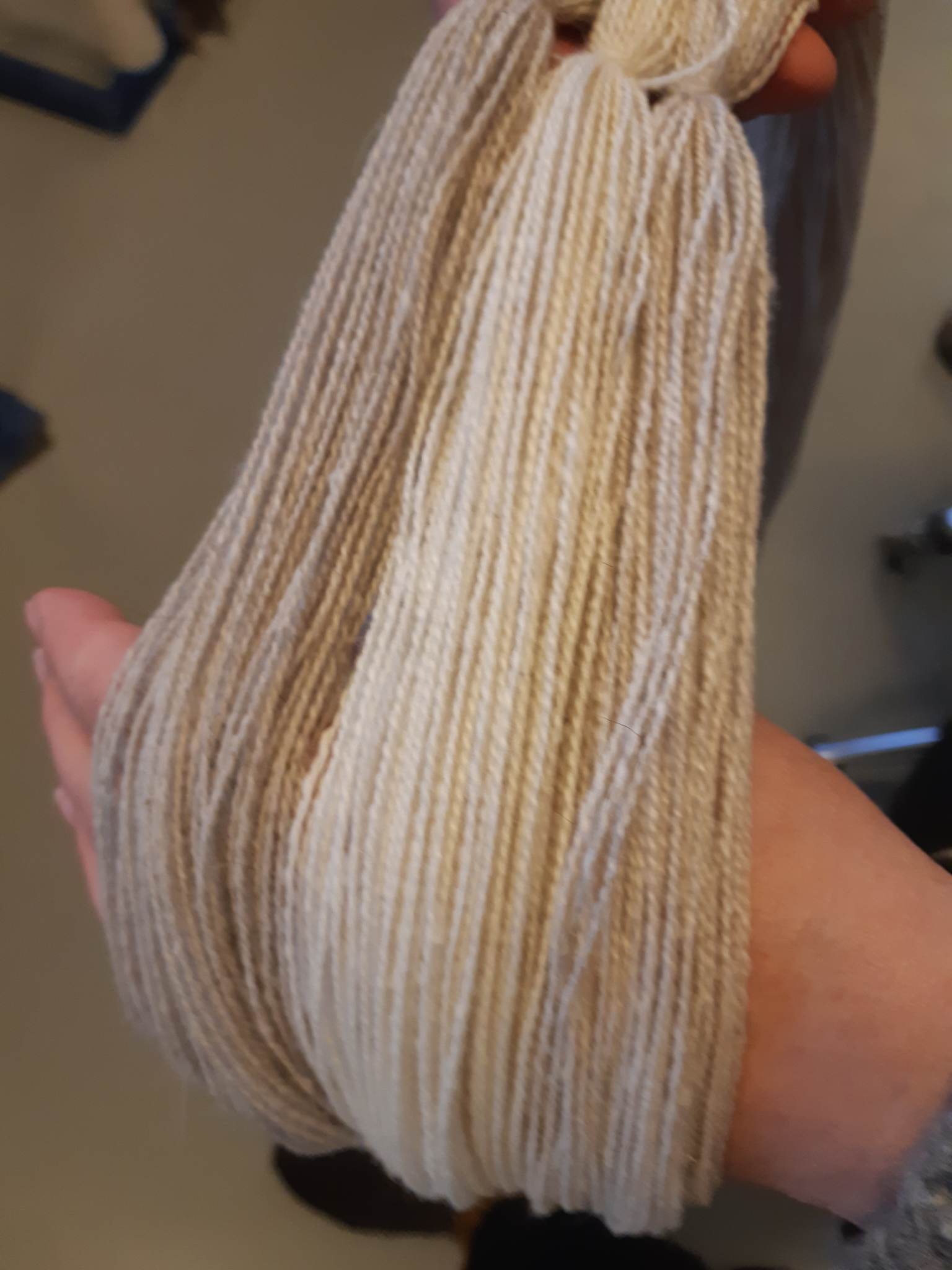

It is sometimes possible to have three different colours of cashmere yarn, but usually there is only one or two. Adding wool to it would also increase the variety of colours.
I have tried to dye it and it takes colour beautifully. Knitting with it is also very nice. It is a bit loose and slippery, but it makes a gorgeous garments. Uppspuni is the only mill in Iceland that spins yarn out of Icelandic goatfibre and we make it rather fine. 100 meters give about 25 gram of yarn which refers to fingering weight. One skein of that is enough for a pair of wrist-warmers or a set of socks and sometimes also mittens for a newborn child.
I don’t have cashmere yarn for sale on my website, only in my shop above the mill. But it is possible to email me at huldauppspuni@gmail.com and order it personally there. I highly recommend it for something extraordinary that you want to make.
As I said, it is something else!

